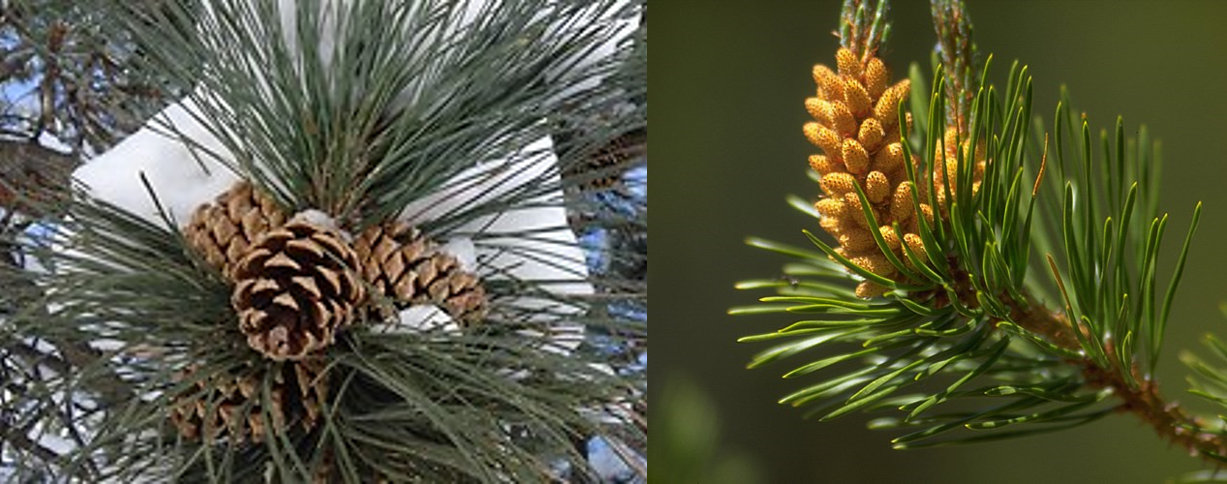Blog

#bioPGH Blog: Conifers in the Cold
 A resource of Biophilia: Pittsburgh, #bioPGH is a weekly blog and social media series that aims to encourage both children and adults to reconnect with nature and enjoy what each of our distinctive seasons has to offer.
A resource of Biophilia: Pittsburgh, #bioPGH is a weekly blog and social media series that aims to encourage both children and adults to reconnect with nature and enjoy what each of our distinctive seasons has to offer.
This time of year, conifers take the spotlight! From trees dazzling in our living rooms and town squares to cones decorating homes or adding some rustic novelty to a flower bouquet, conifers are in their green glory year-round—which makes them the perfect winter time decorations in a space, in addition to being ecologically important. This group of trees, including pines, hemlocks, firs, cedar, larches, and spruce, are member of the Gymnosperm group of plants; and they have a variety of adaptations that equip them for survival in extreme conditions like winter. Let’s check it out!
One of the most noticeable traits of conifers is their (usually) evergreen foliage. The foliage ranges in appearance from individual needles of spruce and fir to little clusters of needles like in pines or little overlapping “scales” on a needle like in cedars. These variations of needles, though, are the key to living in harsh conditions. If we look at deciduous broad leaves, we just saw how they prepare for winter with the dramatic color change and drop of leaves in autumn (the term "deciduous" refers to any tree that seasonally drops its leaves – larches are notably a group of deciduous conifers). Leaves, which produce food for the tree during warm months, become too energetically costly in the winter. The potential for water loss and leaf tissue damage during the frozen months overwhelms any benefit for the tree; thus, the leaves fall. Conifers, on the other hand, have needles instead of broad leaves. Needles minimize the weight of snow and ice that can accumulate on the branches, and the thick, waxy outer layer, the “cuticle,” helps protect the cells inside. In addition, the wood of most conifers is fairly flexible, and can handle harsh winter winds. These adaptations allow evergreens to survive the bitterly cold winters of taigas (boreal forests.) In these extreme climates, where yearly averages are only 50 to -40 degrees Fahrenheit, conifers reign!
I will mention too, other major preparations for winter, that are common across both conifer and deciduous trees, involve the individual cells inside a tree itself. A tree’s main goal in the winter is to prevent living cells from freezing. Thus, the tree’s cells alter the composition of their cell membrane lipids (fats) enough to allow greater water transport out of the cell. Also, tree cells break down their starch reserves into sugars. With much of the original water transported out of this cell, this combination creates a sugary “antifreeze” solution inside the cells to protect them from freezing or forming structurally dangerous ice crystals.
As we mentioned earlier, conifers are all members of the Gymnosperm plant group, which literally means “naked seed” in reference to their lack of fruit. Rather, cones (also called a strobilus or plural strobili) are the reproductive structures of coniferous plants. In most trees, there are pollen-bearing male cones and seed-bearing female cones. The image that popped in your mind for the phrase “pine cone” earlier was probably a female cone.

Female (left) and male (right) cones of the Ponderosa pine. The female cones commonly grow 3-6 inches long, while the male cones. If you’re a crafter, the female cones are commonly available for use in different projects. Both images, National Park Service, public domain.
Female cones are larger and their scales are made of tough, woody material that protect the megagametophyte—what we can think of as a conifer “egg” – in their ovules. Male cones, on the other hand, are small and inconspicuous compared to the much larger female cones. Now granted, some conifers, like yew and juniper, do produce fleshy seed coatings that look like berries; but they are botanically part of the cones rather than a part of the ovary like fruits.
Well, now that we have some bio fun-facts, we can go back to adding evergreens as our winter décor! The tradition dates back thousands of years, so we are in generations of good company with our awesome greenery. Enjoy!
Connecting to Outdoors Tip: Family experiment! The next time the temperatures drop to freezing at night, would you like to test how well a tree’s sugary “antifreeze” protect the tree’s cells? Take two balloons (these will be your two “cells”) and add 2.5 tablespoons of table sugar to one of the balloons. Now add half cup of water to each of the balloons. Once you’ve tied off the balloons, be sure shake up the sugar-water balloon to mix well. Now, leave both balloons outside overnight. Did either freeze or turn to slush? What was the temperature that night? Do you think salt or sugar is better at preventing ice formation? What happens when you eat too much salty food? Does it make you thirsty? Why might a plant not want to use salt as anti-freeze?
Resources
Leslie 2011: Predation and protection in the macroevolutionary history of conifer cones
Michigan State University: Fun Facts About Pine Cones
Michigan State University: How Do Trees Survive in the Winter
Northern Woodlands: How Do Trees Survive Winter Cold?
NASA, Earth Observatory: Coniferous Forest
Image Credits: Cover, Pexels, public domain; Header, Böhringer Friedrich, CC-BY-3.0-AT

